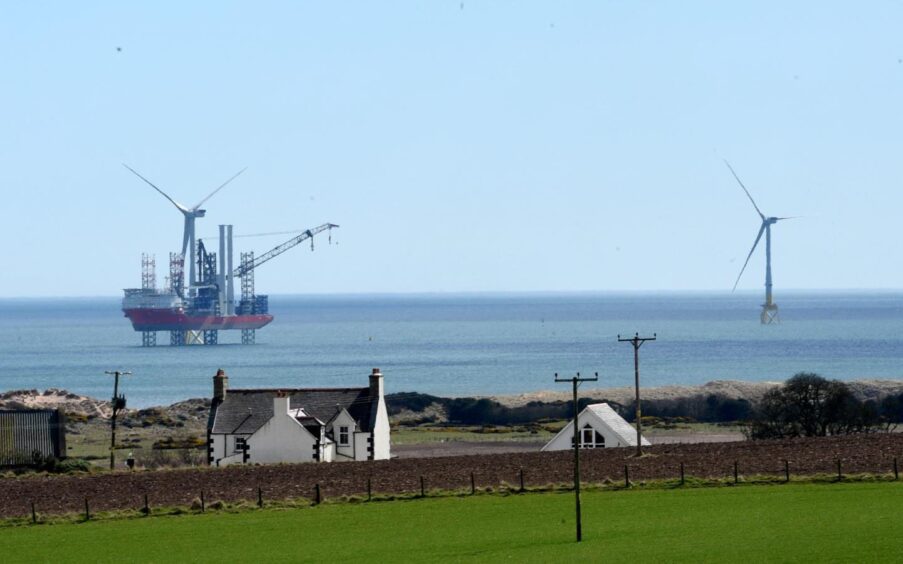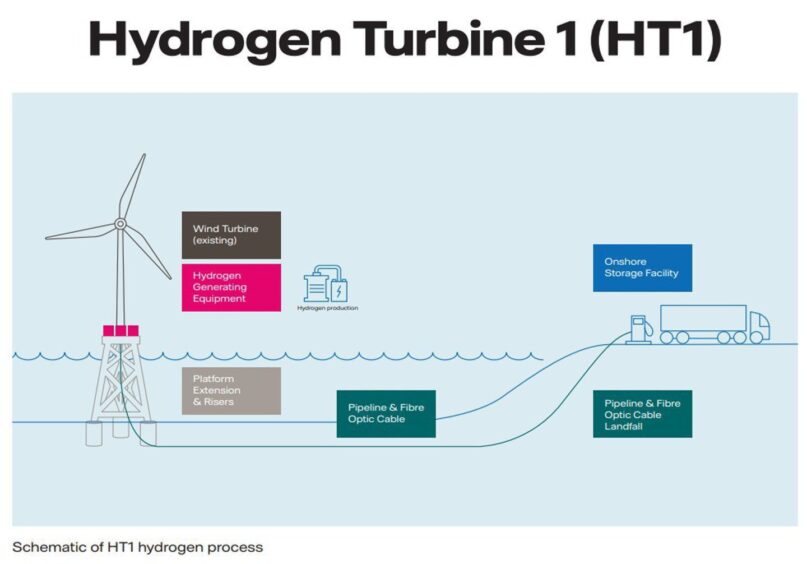
Vattenfall’s recent announcement that it was canning its hydrogen trial at the European Offshore Wind Deployment Centre offshore Aberdeen has rather riled me.
There are two key reasons for this:
The first is historic self-interest as I was heavily involved with devising the EOWDC and the scope of what might be possible including hydrogen production trials.
That was during my time as chair of Aberdeen Renewable Energy Group, which very much drove the lateral thinking side of the project rather than partner Vattenfall.
And second, disappointment that Vattenfall has not seen fit to get beyond the preliminary stage of the project and actually install an electrolyser in-farm.
The Hydrogen Turbine 1 (HT1) project aim was to have been a world first by equipping one of the EOWDC’s 8.8MW turbines with an on-board electrolyzer package.
HT1 was to have tested the integration of a hydrogen-producing electrolyser with an offshore wind turbine, including examining real-time responses to a variable power source.
It was also to look at how fossil-free hydrogen can be produced safely at low cost, and what needs to be done to speed up the regulatory process and accelerate large-scale commercial hydrogen production.

Had HT1 continued, produced hydrogen would in time have been piped to a storage and distribution centre onshore.
But Vattenfall has kept very quiet about this despite there being clear interest from key parties in the city.
It’s a pity as localised offshore community hydrogen production is now very much on the cards around maritime Europe.
Indeed, in my Shipping Line column this month, I concentrate on a world first in that Norway is building two large hydrogen fuel-cell ferries for the difficult Bodo-Lofoten service and that hydrogen production will be local.
Lead in that part of this bold maritime transportation transition project is GreenH and public money has been made available to facilitate the hydrogen plant’s build.
Of course, nothing is forever and shifting circumstances can force change, such as with Phase Four of SSE and Equinor’s Dogger Bank Wind Farm where the partners have decided to scrap plans to produce green hydrogen in favour of full-on power generation for the UK.
This doesn’t faze me as I feel sure that, Equinor especially, will reopen windfarm hydrogen at some future date.
But Vattenfall’s decision does baffle me and I believe it really will compromise Aberdeen’s hydrogen ambitions.
The company said in its cancellation statement that HT1 “aided the creation of a new regulatory and consenting regime by the UK Government for offshore hydrogen transportation and storage. It clarified roles and responsibilities of interlinking regulators, which will be crucial to the development of the future renewable hydrogen market in the UK”.
I get that. There has to be rules. But is that really it? Why can’t there be hydrogen production from the EOWDC? It seems the project has had more to do with energy transition regulatory pen-pushers than anything else.
Perhaps Vattenfall never intended to move to stage two.
The company has done nicely out of the EU public purse regarding the EOWDC, though it was very much AREG that took the lead in fighting for a grant from the post 2008 banking crash EU Recovery fund.
It also did rather well out of the UK public purse too as, in May 2022, the company managed to wheedle funding from the UK Department for Energy Security and Net Zero (DESNZ) through the Low Carbon Hydrogen Supply 2 funding programme to help fund HT1.
This is how someone close to me in that enterprise put it when we discussed Vattenfall’s cancellation decision:
“They effectively used AREG to get European money to have a testing station in place then put a couple of ‘firsts’ in there that didn’t need any development or testing to justify the €48 million; then didn’t let anyone else use it; then said they were going to use it to test offshore hydrogen production, and then convinced the UK government that it was a great idea and to give them more money. They consistently refused to have involvement of other parties in it too.”
Fortunately, it’s not all bad news from Aberdeen Bay as the Offshore Renewable Energy (ORE) Catapult has just signed with Vattenfall a three-year extension to its testing and demonstration collaboration at the EOWDC.
The partnership at the 96.8MW farm first began in 2019.
Since then, technologies with the potential to address operation and maintenance challenges currently facing offshore wind farms have been convincingly tested at the site, such as blade repair, leading edge erosion, robotics, remote cable monitoring and autonomous inspection.
And now further companies are ready to test their technologies.
Having criticised HT1, I have to give credit where it is due. A condition of the original EU grant was that the EOWDC would be used not just to generate a big slice of the juice guzzled by Aberdeen every day, but to be a real live test-centre located near-shore with excellent access to the city’s extensive energy supply chain.
The relationship with ORE at least honours that agreement and current future projects at the wind farm will centre around robotics and “sustainable solutions”.
Recommended for you
